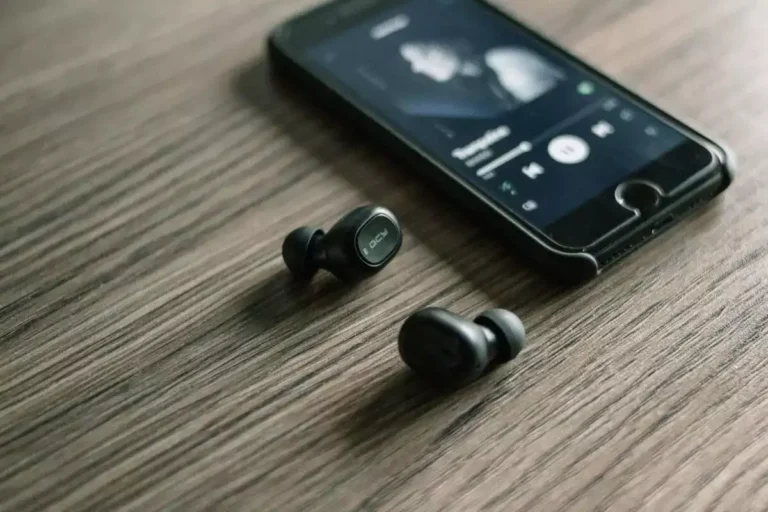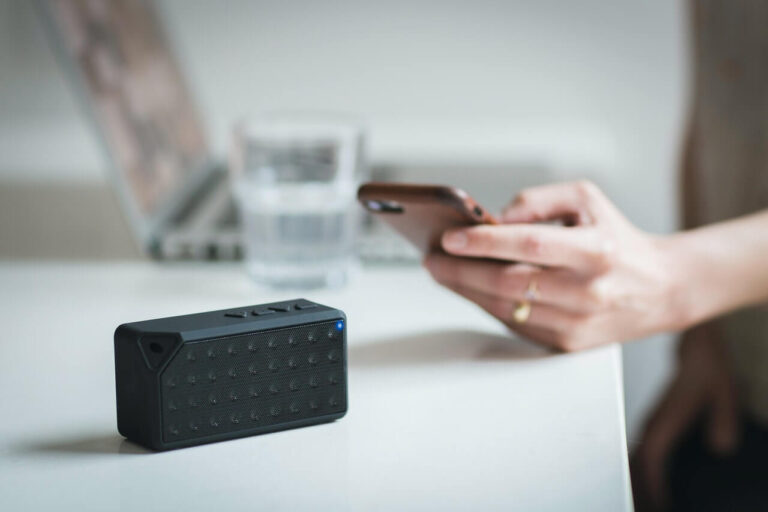8 Tips To Keep Your Bluetooth Secure From Hacking
Despite all the benefits of Bluetooth, the technology can still be risky to use from a cybersecurity perspective.
In fact, there are countless incidents in which people’s private information was accessed and stolen through Bluetooth.
If these risks concern you, fret not; in this article, I will go over how to prevent Bluetooth hacking.
However, before we can combat Bluetooth hacking, we must first understand what it is and how it is carried out.

What is Bluetooth Hacking?
Bluetooth hacking is a type of cyber attack carried out through vulnerabilities present in Bluetooth’s hardware and software.
Hackers purposefully look for exploitable weaknesses in the security of Bluetooth; once one has been found, they use it to access devices and information that they should not have access to. In the worst case, this stolen information can result in credit card fraud and even identity theft.
Thus, it is essential that responsible users guard their cybersecurity while using Bluetooth.
How is Bluetooth Hacking Carried Out?
Although all Bluetooth hacking may appear the same, there are, in fact, three distinct types of Bluetooth hacking to be wary of.
Bluejacking
One of the most common forms of Bluetooth hacking is known as Bluejacking. This hack comes about thanks to a loophole within Bluetooth’s messaging options.
Through this vulnerability, any malicious hacker within range of your Bluetooth-activated device will be able to send unsolicited messages to you. Generally, this form of hack does not go beyond that, hence making it comparable to prank calls and other minor inconveniences.
The main risk posed by Bluejacking is emotional, given the fact that the messages being sent by the hackers may be threatening or otherwise disturbing to the receiver.
Generally, however, this type of Bluetooth hacking is the least serious and the least damaging of the three. This is because, through Bluejacking, the hackers gain no access to your device or its data.
Bluesnarfing
A much more serious type of Bluetooth cyberattack is Bluesnarfing. The mechanism behind this type of attack is complex; however, broadly speaking, Bluesnarfing involves hackers connecting to your phone through Bluetooth without your consent or realization.
Once connected, these hackers will have access to a plethora of data present within your phone.
This can include relatively mundane information such as contacts and calendar information to very serious privacy breaches such as passwords, emails, and even photos.
The fact that malicious actors have access to your private data in this form of attack makes it much more serious and dangerous than Bluejacking.
Another thing to note about Bluesnarfing is that hackers can perform it and steal your information without leaving so much as a trace. Thus, if you have been Bluesnarfed, it is likely that you won’t even find out until it’s too late.
Bluebugging
This is arguably the most dangerous type of Bluetooth attack that you can encounter. Fortunately, however, it is also very rare because only extremely skilled hackers can perform it.
Bluebugging takes place when a hacker manages to place a backdoor in your device. A backdoor, in this context, is a piece of software that allows them access to your device whenever they want. Through this, they can connect to it without your knowledge or permission.
With the help of this backdoor, the hacker will have access to essentially all the information on your device.
Moreover, they will be able to view what you are doing and listen in on your phone calls in real-time.
If Bluebugging wasn’t creepy enough already, it gets worse. Through this form of Bluetooth attack, the hacker can also take complete control of your device. Whether logging into your accounts, sending text messages, or even placing calls, the hacker can do it all on your behalf through this type of hacking.
Perhaps the worst thing about Bluebugging is that the victim is not even aware that their cybersecurity has been compromised. The hacker will simply be able to use your device on your behalf without alerting you indefinitely.
The way most people find out they have been Bluebugged is when a friend, or bank, alerts them that strange activity has been spotted from their device; a process that can take days or weeks.
How to Protect Yourself From Bluetooth Hacking
As we have learned, hackers have an expansive arsenal of tools to hack your device through Bluetooth. Thus, it becomes necessary that you take defensive measures to protect yourself and your cybersecurity.
To help you with that process, I have compiled a list of some of the most important steps to take to prevent Bluetooth hacking.
- Turning Bluetooth Off When It Is Not In Use
The common thread that unites all the cyberattacks we have discussed is that they all take place through your device’s Bluetooth connection. This is because Bluetooth is a relatively vulnerable technology used to connect to many other devices.
Unfortunately, many users are not aware of the risks posed by Bluetooth. Hence they leave their device’s Bluetooth on even when it is not in use. This increases the chances of a successful cyberattack.
To deal with this Achilles heel, one of the first countermeasures you should take is to develop a habit of turning Bluetooth off when it is not in use. Not only will this save your device’s battery, but it may just save you from an extremely damaging cyberattack!
- Updating Drivers
To understand why this step is so important, we must first understand the role that drivers play.
Essentially, these pieces of software act as a bridge between your Bluetooth receiver and the rest of your phone or device. They control and route the flow of information between the Bluetooth antenna and the core of the phone.
Thanks to this important job, drivers are one of the most crucial types of software on your phone. Not only do they ensure the proper functioning of your device, but they also act as the first line of defense against any cyberattacks.
Unfortunately, however, no driver is perfect. Each version tends to have some sort of exploitable vulnerability. When hackers find it, a new version of the driver is released with the vulnerability patched out.
Thus, there is a constant ongoing arms race between hackers and software engineers.
Your role is simple; you must ensure that your drivers are always updated to the latest version. Usually, your phone will provide you with automatic updates when a new driver version is available.
However, I recommend that you be proactive and manually check for any updates to the Bluetooth drivers on your phone.
You can look for drivers online, through search engines, as well as on the website of your device’s manufacturer. If, however, you cannot find an updated driver there, then consulting tech forums may also be a good bed.
Through this method, you will ensure that you always have the most secure version of Bluetooth drivers on your device. Thus, reducing the chances that a cyberattack against you will be successful.
- Avoid Pairing in Public
As every Bluetooth user knows, to pair your Bluetooth devices, both of them need to be in pairing mode. In pairing mode, the devices are visible to you, the owner, and any other Bluetooth users within range.
Thus, pairing is a particularly risky activity as it exposes your devices to any malicious hackers that may be present nearby. For this reason, I recommend that you avoid pairing Bluetooth devices in public.
When in public, there can be a lot of people in your vicinity, which drastically increases the chances of a hacker being within range and attacking your devices when they are in the pairing mode. Alternatively, you should try to pair when you are in private, or there are very few people nearby.
Through this method, there will be a lower risk of malicious actors being nearby and targeting your device through Bluetooth hacking.
- Watch Who You Pair With
When two Bluetooth devices are paired, they share information and become connected. Due to this fact, hackers consider successfully pairing with the victim’s device as an extremely effective cyberattack method.
Thus, you may receive pairing requests from unknown devices or people. Never, under any circumstance, should you accept these requests. Intentionally or unintentionally, pairing with an unknown device can spell disaster for your cybersecurity.
This danger is amplified by the fact that, after two devices have paired up, it is very easy for a skilled hacker to extract any and all personal information without your consent or knowledge.
Thus, as a rule of thumb, never accepting unknown requests will reduce the chances of a successful cyberattack being launched against you.
- Select The ‘Not Discoverable’ Setting
When your device is in the discoverable mode, it is visible to all other nearby Bluetooth devices. This is a convenient feature built into Bluetooth to make the process of pairing easier and quicker.
Unfortunately, however, hackers have found a way to use this for their own cyberattacks. When your device is in the discoverable mode, it signals hackers, informing them of a potential target. Hackers can then hone in on your device and launch their cyberattack.
By turning off Discoverable mode, you will no longer be visible to nearby devices. This is the default state you should keep your Bluetooth setting in, only turning on Discoverability when you need to pair. This will significantly help reduce the likelihood of hackers identifying you as a target.
However, one thing to remember is that recently some hackers have begun finding a way around this countermeasure.
These particularly skilled hackers can now locate your Bluetooth device even if it is not in the Discoverable mode.
Fortunately, however, hackers with this skill are rare for now; hence this is still, largely, an effective countermeasure.
- Do Not Share Sensitive Information
The nature of Bluetooth technology is such that it will likely always be vulnerable to hackers. This is the case because Bluetooth relies on radio waves to carry information. These radio waves travel through the air and thus can be intercepted by skilled hackers.
Due to this fact, as a precautionary measure, I recommend that you do not use Bluetooth’s file sharing feature to exchange or transmit any sensitive or personal information. This can include things like passwords, pictures, documents, or any other form of Personally Identifiable Information (PII).
By taking this safeguard, you will ensure that even if your Bluetooth transmissions are intercepted, the hackers will not gain anything damaging or of substance.
- Use a Virtual Private Network(VPN)
VPNs, also known as Virtual Private Networks, are a tool you can use to protect yourself from most Bluetooth hacking attacks. Moreover, using a VPN is one of the most effective countermeasures against most forms of cyberattacks, including Bluetooth hacking.
Most Bluetooth hacking takes place due to the fact that the hacker can access the Bluetooth network between your devices. This can be done in a multitude of ways, whether that be through the infiltration of the network through a backdoor or simply entering it through pairing with one of your devices.
To get around this issue and provide your Bluetooth network with an additional layer of security, VPNs become crucially relevant.
A Virtual Private Network is essentially a mini-network to which only your devices have access. Generally, most VPNs are protected with encryption which makes hacking extremely difficult.
Encryption is a form of one-way cryptography through which information is passed, making it unreadable to everyone but the end-user.
The end-user can read an encrypted message only because they have a private key stored on their device to decode the message.
Fortunately, when using a VPN, everything is encrypted and decrypted automatically, and no input is required from you, the user.
Thus having a VPN while using Bluetooth can be a strong preventative measure against most Bluetooth hacking.
Even if hackers manage to break into your network, they will not be able to get any information out of it due to the military-grade encryption used by many VPNs.
There are multiple ways to set up a VPN connection.
You can make your own or purchase a subscription that allows you access to a VPN for your devices.
Generally, the latter option is preferable as professional VPN providers have access to better encryption and better expertise regarding how to set up a secure VPN.
Once your Virtual Private Network has been set up, you can rest assured with the knowledge that you’ll be safe from all but the most determined of hackers.
- Unpair From Lost Devices
Sometimes, your Bluetooth gadget may get damaged or be lost. In such a circumstance, you should immediately unpair from that device.
This precaution is helpful because hackers can use lost Bluetooth devices as a way to access other devices that are paired with the lost device. Thus they are able to infiltrate your Bluetooth network.
Although how the hackers do this is complex, this is a frequent enough form of cyberattack to warrant taking precautions.
By immediately unpairing your device, you will ensure that the hackers do not have a path to access the private and sensitive information stored in your gadget.
Developing Good Cyber Security Etiquette
Now that I have gone over a series of eight steps you can take to avoid Bluetooth hacking, you are much better equipped to watch out for your cybersecurity.
However, given how integral digital communications have become in the modern-day, you can never be too careful.
Along with the countermeasures against Bluetooth hacking, there are also other habits you should develop in order to reduce the risks of any form of Cyber Attack, including Bluetooth hacking.
Even though some precautions may, at times, seem cumbersome, they have the potential of saving you from an extremely disastrous hacking incident.
Thus, these recommendations should be regarded as an insurance policy against Cyber Attacks.
- Public Wi-Fi
Almost every part of most cities has one form or another of publicly available Wi-Fi. Often, the temptation to use these networks can be strong as they can save on mobile data costs and even offer better bandwidth at times.
However, you should not fall for it. Public Wi-Fi is not the blessing it seems to be. Many of these networks have weak security, which makes it easy for a third party to hack into connected devices. Similar to Bluetooth hacking, this can result in your personal information being stolen.
Moreover, public Wi-Fi networks cannot be trusted as the administrator of the network itself may be a hacker. This can often be the case because offering free public Wi-Fi is an easy way for hackers to find new targets and connect to devices that they otherwise would not have access to.
Due to these reasons, you should only use Wi-Fi when you know that the network is administered by someone trustworthy. This means that public Wi-Fi is generally not a good bet. Instead, when outside your home, rely on cellular data for access to the internet as this is safer.
- Monitoring Data Usage
Most modern devices offer the option of turning on a data monitor, which tracks the bandwidth being used at all times. The amount of bandwidth being used at any given time can tell a lot about the activity of your device.
For example, if you are browsing the web, you are likely to use only a few hundred kilobytes of bandwidth per second. Conversely, if you are watching videos on Youtube, then bandwidth usage is going to be much higher.
Thus monitoring how much bandwidth your phone is using can be a useful way of detecting whether or not your phone’s security has been compromised.
For example, if you’re reading an E-book on your device, but the bandwidth use is a few megabytes per second, then you will know that some sort of background process is sending or receiving data without your knowledge.
In the case of Bluetooth hacking, if the hackers try downloading information off of your phone, your bandwidth usage should shoot up. Hence, this will provide you with an early warning that something is wrong. Then you can turn your device off and get help.
- Monitoring Irregular Activity
Generally, most software you use goes through a high degree of quality control and polish, making it extremely stable and reliable.
However, much of the software that hackers use to target devices do not go through rigorous quality control and beta testing.
Due to this fact, if a backdoor has been secretly installed on your device or if someone is trying to compromise your device’s security, your device may display erratic behavior.
This can include things like randomly turning on and off, heavy stuttering, or other issues that had not been encountered before.
This sort of irregular activity is a telltale sign that your device’s security has been compromised.
If you notice something like this, the first thing you should do is go into the device settings and select the factory reset option.
This will effectively wipe the device’s memory clean and return it to the state it was in when purchased.
Thanks to this, the virus or backdoor that had infiltrated your device will also be removed. Hence, this method will prevent a more serious theft of identity or sensitive information from happening.
Wrap Up
Although it’s almost impossible to make a completely perfect cybersecurity system, you can still aim to create an excellent defense.
By adopting the good practices highlighted above, as well as the eight countermeasures against Bluetooth hacking, you can significantly decrease the chances of a Cyberattack catching you off guard!
Stay safe!

Espen
Espen is the Director of ProPairing and has written extensively about Bluetooth devices for years. He is a consumer product expert and has personally tested Bluetooth devices for the last decade.






